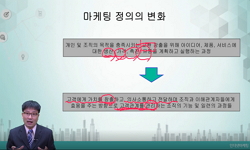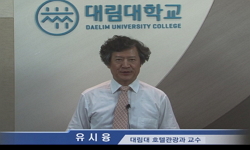현재의 인터넷은 편하고 자유로운 공간이지만 우리에게 제한적인 정보를 줄뿐 만 아니라 때로 스팸자료와 같이 쓰레기 같은 정보를 양산하기도 한다. 인터넷은 통신 인프라의 통합을 의미...
http://chineseinput.net/에서 pinyin(병음)방식으로 중국어를 변환할 수 있습니다.
변환된 중국어를 복사하여 사용하시면 됩니다.
- 中文 을 입력하시려면 zhongwen을 입력하시고 space를누르시면됩니다.
- 北京 을 입력하시려면 beijing을 입력하시고 space를 누르시면 됩니다.
XML을 基盤으로 한 神學 시소러스 시스템의 設計 및 具現에 관한 硏究 : 우리말 神學用語를 中心으로 = Study on design and embodiment of theology thesaurus based on XML : focusing on theology terms in Korean language
한글로보기https://www.riss.kr/link?id=T9476084
- 저자
-
발행사항
안양 : 安養大學校 尖端産業技術大學院, 2004
-
학위논문사항
학위논문(석사) -- 안양대학교 첨단산업기술대학원 , 인터넷정보학전공 , 2004. 2
-
발행연도
2004
-
작성언어
한국어
- 주제어
-
KDC
566.874 판사항(4)
-
발행국(도시)
경기도
-
형태사항
x, 58p. : 삽도 ; 26cm.
-
일반주기명
참고문헌: p. 47-50
- 소장기관
-
0
상세조회 -
0
다운로드
부가정보
국문 초록 (Abstract)
XML은 W3C에서 SGML을 웹 환경에 적합하도록 만든 언어이다. 웹 표준문서로 받아드려지고 있는 XML은 HTML의 장점과 SGML의 장점을 고루 갖추고 있어서 확장성과 구조성을 그대로 유지하면서, URL링크삽입과 스타일 쉬트 등의 기능을 추가함으로써 웹 솔루션 개발에 일대 혁신을 이루었다.
본 논문은 범용성 있는 프로토콜인 XML문서를 레이아웃 해서 정보검색 서비스를 효율적으로 할 수 있는 신학시소러스 시스템의 구조를 파악하고, 설계함으로서 고품위의 신학정보를 검색하는데 주안점을 두고 있다. 신학용어추출의 기본 자원인 용어 사전의 특징은 제시된 용어의 해설에 중점을 둔다면, 신학 시소러스는 추출된 용어간의 관계를 체계적으로 설정함으로써 용어 사전보다 더 다양하고 체계적인 정보를 제공하게 된다.
본 연구는 먼저 XML에 대한 개념을 이해시키고, XML과 시소러스의 관계를 설정한 후, 신학과 관련한 용어추출 및 신학 기본 키워드 선택을 위한 신학용어 사전을 구조화하고, 웹 서비스를 위한 신학 시소러스 검색 브라우저를 설계하였다.
본 논문이 XML표준기술과 우리말 신학시소러스의 만남을 통해서 이용자들이 쉽게 신학정보에 접근하게하고, 신학적 소양의 향상은 물론, 향후 인공지능 기법인 온톨로지와 결합하여 신학정보 검색을 극대화 하는 계기가 될 것으로 기대한다.
또한 현재의 시맨틱웹 기술에 대한 연구가 초기단계에 불과하나, 앞으로 온톨로지 기법과 접목시켜서 시맨틱웹의 각 요소 기술들의 유기적인 통합이 선행되어야 하며, 개선된 마크업 언어 및 표준화 동향에 대한 연구와 함께 시맨틱웹에 대한 효과적인 활용방안 등에 대한 연구가 필요하다.
현재의 인터넷은 편하고 자유로운 공간이지만 우리에게 제한적인 정보를 줄뿐 만 아니라 때로 스팸자료와 같이 쓰레기 같은 정보를 양산하기도 한다. 인터넷은 통신 인프라의 통합을 의미할 뿐 정보를 통합했다고 보기에는 너무나 많은 제약이 따른다. 여기저기 흩어진 정보들을 한데 모우는 정보 통합이 이루어진다면 우리 생활은 한 단계 업그레이드 될 것이며, 그 중심에 XML이 존재하고 있음을 먼저 밝힌다.
XML은 W3C에서 SGML을 웹 환경에 적합하도록 만든 언어이다. 웹 표준문서로 받아드려지고 있는 XML은 HTML의 장점과 SGML의 장점을 고루 갖추고 있어서 확장성과 구조성을 그대로 유지하면서, URL링크삽입과 스타일 쉬트 등의 기능을 추가함으로써 웹 솔루션 개발에 일대 혁신을 이루었다.
본 논문은 범용성 있는 프로토콜인 XML문서를 레이아웃 해서 정보검색 서비스를 효율적으로 할 수 있는 신학시소러스 시스템의 구조를 파악하고, 설계함으로서 고품위의 신학정보를 검색하는데 주안점을 두고 있다. 신학용어추출의 기본 자원인 용어 사전의 특징은 제시된 용어의 해설에 중점을 둔다면, 신학 시소러스는 추출된 용어간의 관계를 체계적으로 설정함으로써 용어 사전보다 더 다양하고 체계적인 정보를 제공하게 된다.
본 연구는 먼저 XML에 대한 개념을 이해시키고, XML과 시소러스의 관계를 설정한 후, 신학과 관련한 용어추출 및 신학 기본 키워드 선택을 위한 신학용어 사전을 구조화하고, 웹 서비스를 위한 신학 시소러스 검색 브라우저를 설계하였다.
본 논문이 XML표준기술과 우리말 신학시소러스의 만남을 통해서 이용자들이 쉽게 신학정보에 접근하게하고, 신학적 소양의 향상은 물론, 향후 인공지능 기법인 온톨로지와 결합하여 신학정보 검색을 극대화 하는 계기가 될 것으로 기대한다.
또한 현재의 시맨틱웹 기술에 대한 연구가 초기단계에 불과하나, 앞으로 온톨로지 기법과 접목시켜서 시맨틱웹의 각 요소 기술들의 유기적인 통합이 선행되어야 하며, 개선된 마크업 언어 및 표준화 동향에 대한 연구와 함께 시맨틱웹에 대한 효과적인 활용방안 등에 대한 연구가 필요하다.
다국어 초록 (Multilingual Abstract)
XML, a language that has customized SGML to web environment, has both the advantage of HTML and that of SGML and is becoming the standard web document. It has made a breakthrough in the development of web solution, maintaining the expandability and the structure and supporting complicated link insertion and style shift functions,
This thesis focuses on understanding and designing the structure of theology thesaurus system that could provide the effective search service through layout of the widely used XML documents protocol, which supports searching the high quality theology information. While terminology dictionary, the source for theology term, explains the term, theology thesaurus sets up the relations between the extracted terms systematically, thereby providing more diverse and systematic information compared to terminology dictionary.
This thesis offers an understanding of XML concepts first, sets up a relationship between XML and thesaurus, builds a structure of theology term dictionary for the extraction of theological term and the selection of basic theological keyword, and finally designs theology thesaurus search browser for web service. With XML standard technology combined with Korean language theology thesaurus, an easy access to theology information is available, theological knowledge is surely improved, and a synergy for theology searching via integration with an artificial intelligence technique, Ontology, is expected in future.
Study on semantic web technology is currently at its beginning stage but, the organic integration of every component technique of Semantic web and the effective ways to use Semantic web should be studied furthermore combined with ontology technique in the future.
Currently, there is plenty of information in Internet. However, since Internet means merely an integration of communication infrastructure, we still recognize lots of restrictions in the aspect of the information integration. If information integratio...
Currently, there is plenty of information in Internet. However, since Internet means merely an integration of communication infrastructure, we still recognize lots of restrictions in the aspect of the information integration. If information integration was realized, our standard of living would be upgraded. XML will play a pivotal role in the process of information integration.
XML, a language that has customized SGML to web environment, has both the advantage of HTML and that of SGML and is becoming the standard web document. It has made a breakthrough in the development of web solution, maintaining the expandability and the structure and supporting complicated link insertion and style shift functions,
This thesis focuses on understanding and designing the structure of theology thesaurus system that could provide the effective search service through layout of the widely used XML documents protocol, which supports searching the high quality theology information. While terminology dictionary, the source for theology term, explains the term, theology thesaurus sets up the relations between the extracted terms systematically, thereby providing more diverse and systematic information compared to terminology dictionary.
This thesis offers an understanding of XML concepts first, sets up a relationship between XML and thesaurus, builds a structure of theology term dictionary for the extraction of theological term and the selection of basic theological keyword, and finally designs theology thesaurus search browser for web service. With XML standard technology combined with Korean language theology thesaurus, an easy access to theology information is available, theological knowledge is surely improved, and a synergy for theology searching via integration with an artificial intelligence technique, Ontology, is expected in future.
Study on semantic web technology is currently at its beginning stage but, the organic integration of every component technique of Semantic web and the effective ways to use Semantic web should be studied furthermore combined with ontology technique in the future.
목차 (Table of Contents)
- 감사의 글 = i
- 목차 = iii
- 그림목차 = vi
- 표목차 = vi
- ABSTRACT = vii
- 감사의 글 = i
- 목차 = iii
- 그림목차 = vi
- 표목차 = vi
- ABSTRACT = vii
- 국문 초록 = ix
- 제1장 서론 = 1
- 1.1 연구 배경 및 필요성 = 1
- 1.2 연구의 목적 = 2
- 1.3 연구의 범위와 방법 = 3
- 제2장 관련 연구 : XML, 시소러스 = 4
- 2.1 XML 연구 = 4
- 2.1.1 XML의 출현과 배경 = 4
- 1) HTML(hypertext markup language) = 5
- 2) XML(extensible markup language) = 5
- 3) SGML(Standard Generalized Markup Language) = 7
- 2.1.2 XML의 구성요소 = 8
- 1) XML 문서구문 = 8
- 2) XSL(XML Stylesheet Language) = 9
- 3) XSLT(XML Stylesheet Language Transformation) = 9
- 4) XLL(XML Linking Language) = 10
- 5) DTD(Document Type Definition : 문서타입구조) = 10
- 6) DOM(Document Object Model: 문서객체모델) = 10
- 2.1.3 XML 문서 처리를 위한 소프트웨어 = 11
- 1) XML 웹 브라우저 = 11
- 2) XML, XSL, DTD 에디터 = 11
- 3) XML 파서 = 11
- 4) XSLT 프로세서 = 12
- 5) DOM과 SAX(Simple API for XML) = 12
- 2.2 시소러스 연구 = 13
- 2.2.1 시소러스의 개요 = 13
- 2.2.2 시소러스작성을 위한 용어수집 방법 및 단계 = 13
- 1) 시소러스의 특성 및 형태 결정 = 14
- 2) 용어 수집을 위한 기본 Source = 14
- 3) 디스크립터의 선택 및 용어의 상호관계 결정 = 14
- 4) 시소러스의 편성 = 15
- 2.2.3 시소러스의 구조 및 형식 = 15
- 1) 시소러스의 의미관계 = 15
- 2) 관계지시기호의 종류 = 17
- 3) 전조합 색인과 후조합 색인 = 18
- 4) 우선어와 비우선어 = 18
- 5) 정확률과 재현률의 관계 = 19
- 6) 전거(Authority) = 19
- 2.2.4 시소러스 구축사례 = 21
- 1) 일반적인 분야 = 21
- 2) 신학 혹은 기독교 분야 = 24
- 제3장 신학 용어를 위한 미니 시소러스의 작성 = 27
- 3.1 신학 시소러스의 기본 구조 = 27
- 3.2 신학시소러스 개발 단계 = 27
- 3.3 신학 용어 수집 = 28
- 3.4 신학 용어의 분류 및 편집 = 28
- 3.4.1 신학용어관계 = 28
- 1) 계층관계 = 29
- 2) 등가관계 = 29
- 3) 관련관계 = 29
- 3.4.2 신학 시소러스 작성 및 실례 = 30
- 제4장 신학시소러스 브라우저의 구조 및 설계 = 35
- 4.1 신학시소러스의 구조화 = 35
- 4.2 신학 시소러스 시스템 설계 = 37
- 4.2.1 설계의 원칙 = 37
- 4.2.2 제작방법 및 과정 = 37
- 4.2.3 우선어의 선택 및 용어 상호관계 결정 = 38
- 4.3 신학 시소러스 검색 시스템 구현 사례 = 39
- 4.3.1 신학시소러스 DTD 문서 작성 = 40
- 4.3.2 신학시소러스 검색 시스템 구현 설명 = 41
- 4.3.3 검색 시스템의 처리도 = 42
- 4.3.4 기존 시소러스 시스템과의 비교 및 평가 = 43
- 제5장 결론 및 향후 과제 = 44
- 참고문헌 = 47
- 부록1 신학 시소러스의 논리적 구조와 구현을 위한 주요 소스화일 = 51
- 1) index.html 소스 화일 = 51
- 2) src.html 소스 파일 = 51
- 3) domlist.xml 소스 파일 = 53
- 부록2 = 58












